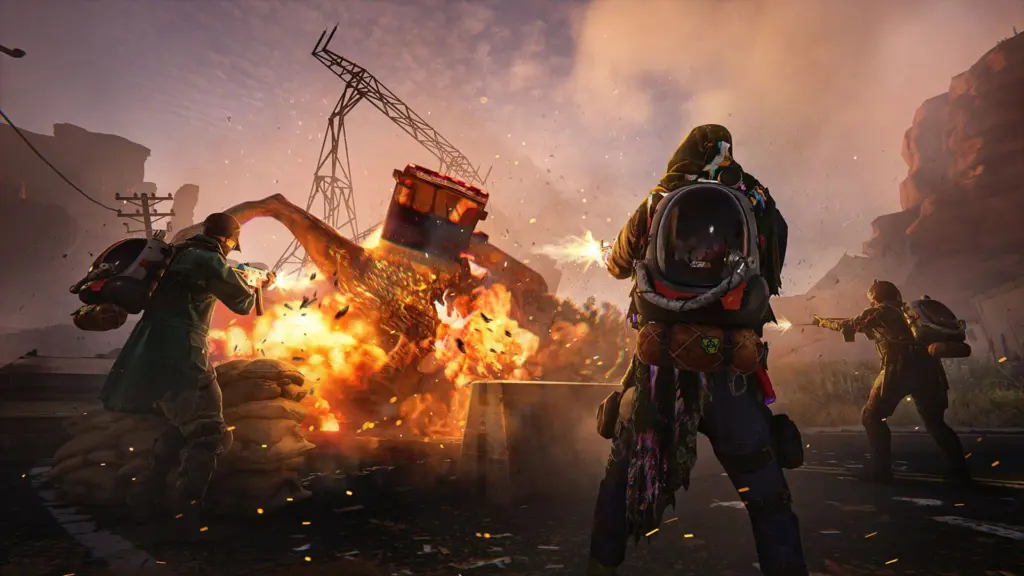Once Human is an innovative survival game that blends elements of strategy, exploration, and horror. In this article, we will delve into its intriguing gameplay mechanics, rich narrative, and immersive environments, providing both newcomers and seasoned players with a thorough understanding of what makes this title captivating. Join us as we journey through the world of Once Human.
The World of Once Human
In Once Human, players are thrust into a world that seamlessly intertwines survival with exploration. As they navigate vast urban landscapes overrun by nature’s reclamation, the eerie forests populated by elusive creatures, and the remnants of mysterious ruins, the environment plays a pivotal role in shaping gameplay. Each setting not only enriches the narrative but also presents unique challenges and resources essential for survival, deeply immersing players in a hauntingly beautiful yet perilous atmosphere.
Gameplay Mechanics Overview
The gameplay mechanics of Once Human revolve around survival, where players must navigate a treacherous landscape filled with threats and resources. Central to this experience is a crafting system that allows for the creation of tools, weapons, and shelters from gathered materials. Players must engage in resource management, balancing food, water, and energy levels to stay alive. Choices made during gameplay significantly impact survival outcomes, with every decision introducing consequences, enhancing the player’s connection to their journey and environment.
Character Development and Customization
Character development in Once Human is a cornerstone of player engagement, allowing for deep personalization and strategic gameplay. Players can customize their avatars extensively, tailoring not only visual aesthetics but also selecting from a variety of unique skills that align with their preferred playstyles. As players progress, they can develop abilities that significantly impact their strategies, enhancing survival tactics and interactions. This level of depth fosters a strong personal investment, encouraging players to invest time and creativity into their character’s evolution.
AI Companions and Enemies
In Once Human, AI companions serve as crucial allies, enhancing survival through unique abilities tailored to different playstyles. These companions can scout ahead, distract enemies, or provide essential resources, fostering teamwork that deepens player engagement. Contrastingly, a diverse array of AI enemies ratchets up tension; from stealthy hunters to relentless swarms, each enemy type demands strategic thinking and adaptability. This interplay between support and opposition cultivates a gripping atmosphere, ensuring that players continually adapt their tactics for survival in a hostile environment.
Narrative and Storytelling Techniques
Once Human employs a rich narrative structure that intricately intertwines gameplay with storytelling. Players are not merely passive observers; instead, they engage with lore that is deeply embedded within the environment. Character backstories unfold through exploration, revealing the complex histories of survivors. As players navigate the haunting landscapes, subtle narrative cues are scattered throughout, encouraging discovery. Additionally, player-driven choices manifest significant repercussions on story progression, amplifying engagement and enhancing emotional stakes in the unfolding drama, creating a truly immersive experience.
Multiplayer Features and Social Interaction
Within the multiplayer framework of Once Human, collaboration emerges as a vital element, shaping the dynamics of survival. Players can forge alliances, share resources, and strategize to overcome formidable threats. The cooperative gameplay cultivates a profound sense of community, where communication tools facilitate real-time interaction and tactical planning. While teamwork enhances survival chances, challenges arise in coordinating diverse playstyles and managing conflicts. Navigating these complexities enriches the experience, fostering bonds that echo the game’s overarching narrative of resilience amid adversity.
Visual and Audio Design
In Once Human, the visual and audio design elements create an immersive atmosphere that plays a pivotal role in player experience. The artistic style thrives on a blend of realism and surrealism, where detailed textures of crumbling environments contrast sharply with vibrant flora and enigmatic creatures. Dynamic lighting effects cast shadows that evoke a sense of uncertainty, enhancing tension as players navigate through the world.
Accompanying this visual richness, the sound design intricately layers ambient sounds with haunting melodies. Subtle audio cues alert players to nearby threats, fostering an acute awareness of the environment. This combination of graphic details and soundscapes deepens emotional engagement, drawing players into the narrative and heightening their stakes. The interplay between visuals and audio cultivates a haunting yet beautiful experience, compelling players to confront their fears and forge connections with their surroundings and fellow players.
Future of Once Human
The future of Once Human appears promising, with the developers hinting at numerous updates and expansions that could enrich gameplay. Player feedback will be pivotal, as the community’s engagement can directly guide enhancements and new features. Developers have teased a roadmap that may include additional character classes, immersive storylines, and unique gameplay mechanics. Active communication channels between players and the development team may lead to innovative content that evolves the game beyond its initial release, fostering an inclusive, thriving ecosystem.
Conclusions
In summary, Once Human offers players a dynamic and thrilling experience that combines survival with rich storytelling. Its unique mechanics and engaging world design keep players invested. Whether you are a fan of survival games or new to the genre, Once Human promises an unforgettable adventure filled with challenges and discoveries.








